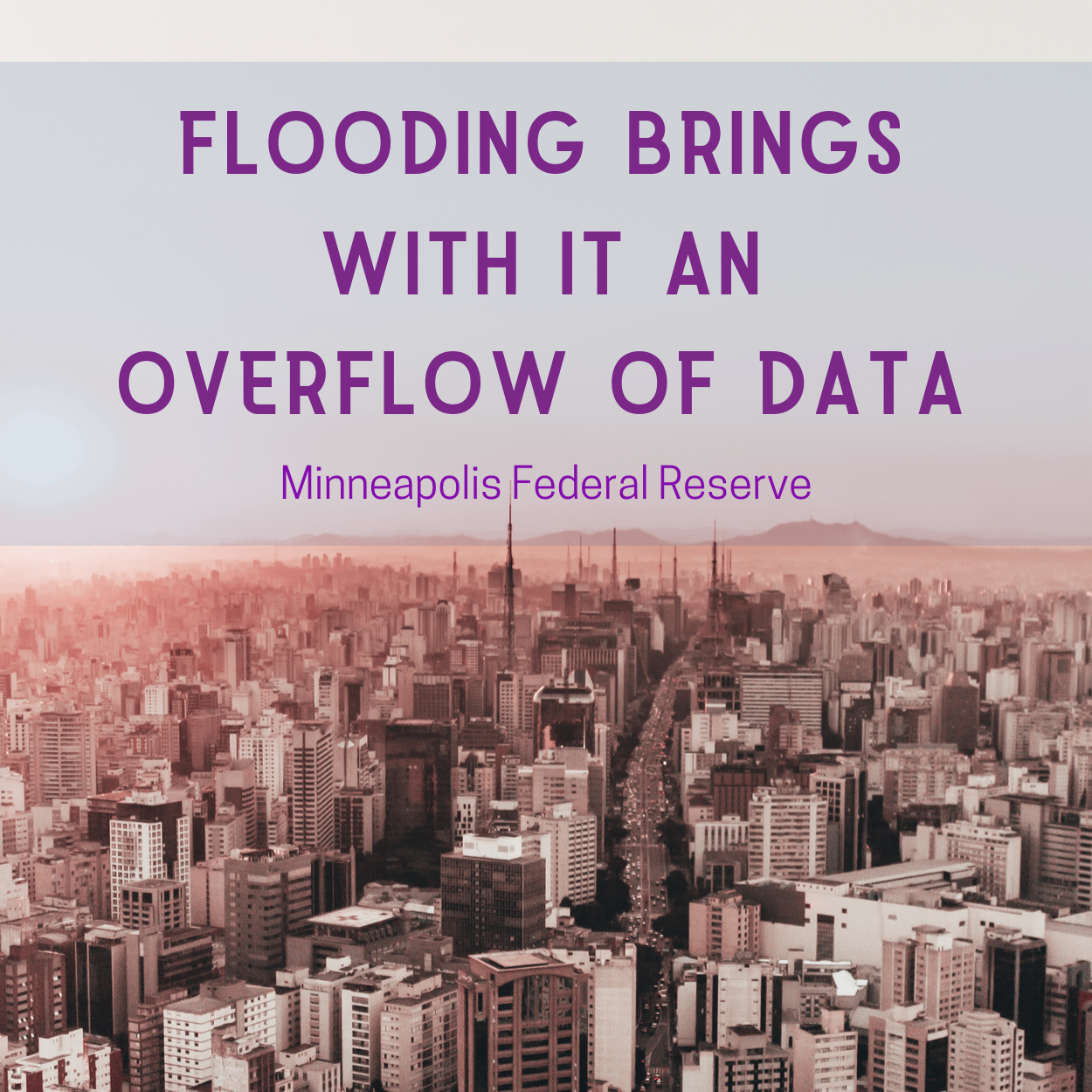21 Oct Flooding Brings With It an Overflow of Data – Minneapolis Federal Reserve

855-368-5502
Flooding Brings With It an Overflow of Data – Minneapolis Federal Reserve
By: Adam M. Matheny
District 9
FEMA’s National Flood Insurance Program (NFIP) has one major problem, while areas like the Federal Reserve’s 9th District have significant enrollment, the bulk of the nation chooses not to take advantage of it. In fact, 65% of homes in this region who have chosen to enroll in the NFIP are not in high-risk flood zones. They purchased their insurance because they wanted rather than needed it.
FEMA began releasing masses of data that included this finding along with these facts:
• 48.3 million – the number of NFIP policies purchased since 2009
• 2.4 million – the number of records of NFIP claims since 1970
• 428,000 – the number of these policies in the 9th District
• 32,000 – the number of claims in the 9th District
• 76% – the percentage of policies issued along the Red River watershed that straddles the Minnesota/North Dakota border that were voluntary
Flood Aware
Nathan Boerboom, a city engineer for Fargo, N.D., says that ” We’ve known quite a while that our community is very — what we like to call — ‘flood aware’. They understand that they have a risk. We’ve created a lot of tools available for them to see what their home risk is.” Fargo has a 96% participation rate. The city offers an online map showing what buildings and areas will flood at depending on the level of the river.
While other areas seem to be unaware of the risk of flooding and don’t see the need to buy NFIP coverage, this area is only too aware of the risks. Since the NFIP’s start over 50 years ago, it has paid out $352.5 million (after being adjusted for inflation) just to those counties located in the Red River watershed. This is 57% of all claims paid in the 9th District, most of which were paid out during singular events such as the Red River flood in 1997.
Over the past half-decade, the NFIP has paid out more than $90.5 billion, one-fifth of which was following Hurricane Katrina to counties in Louisiana. To date, Fargo has been relatively lucky, while others in towns like Grand Forks, ND, and East Grand Forks, MN were almost completely flooded in the 1997 flood. However, 2009 was a close call as the Red River came close to going over the levees.
According to the outdated FEMA maps, the one-hundred-year flood level is 39.3 feet, when, in fact, when properly measured today it sits at 41 feet. The difference is between the 1,800 buildings the FEMA maps showed would flood and the 11,000 at risk, according to the latest U.S. Army Corps of Engineers or approximately 1/3rd of the city.
Overall the NFIP Program Continues to Have Low Participation Rates
Even in those areas where those who live there are well aware of the risk of flooding, neither voluntary nor any other form of purchase rate is particularly high. For example, in Fargo, only 10% of all properties are covered, most of which are outside of the 100-year flood zone. More importantly, this figure only stands at 4% nationwide.
These numbers tend to fluctuate year by year with the highest purchase rates bought during flood years and then canceled after a period of no floods.
Boerboom had this to say, ” Quite a few will also pay attention to what type of fall we had going into winter, how much snow we get early in the winter. If it looks like there’s potential that we’re going to be experiencing a flood, they’ll buy flood insurance in [the] January or February time frame.”
Big Changes In the Air
Changes are in the air for the NFIP as FEMA seeks new ways to measure flood risks. The current 100-year flood plain maps are badly out of date, yet those who live in the areas marked in these antique maps pay more for their insurance because they are considered high risk. Those who live outside the marked zones pay less.
The bad news, those who pay less due to the abrupt boundary lines are often lulled into believing they are safe from flooding. Yet, Mother Nature doesn’t seem to understand that she has to keep her floods within the boundaries. Approximately 20% of all nationwide NFIP claims are for properties outside of the marked zones. In the 9th District, this number climbs to a whopping 56%.
Under Risk Rating 2.0, FEMA plans to use a much wider spectrum of data to determine risk. This will include how far the property is from the source of floodwaters (coastal or river), and the type of flooding. This could include flooding caused by rivers overflowing or heavy rains. It is hoped that under Risk Rating 2.0 premiums will not increase significantly. If they reach annual costs in the thousands, the majority of those who are not required to buy flood insurance simply won’t.

